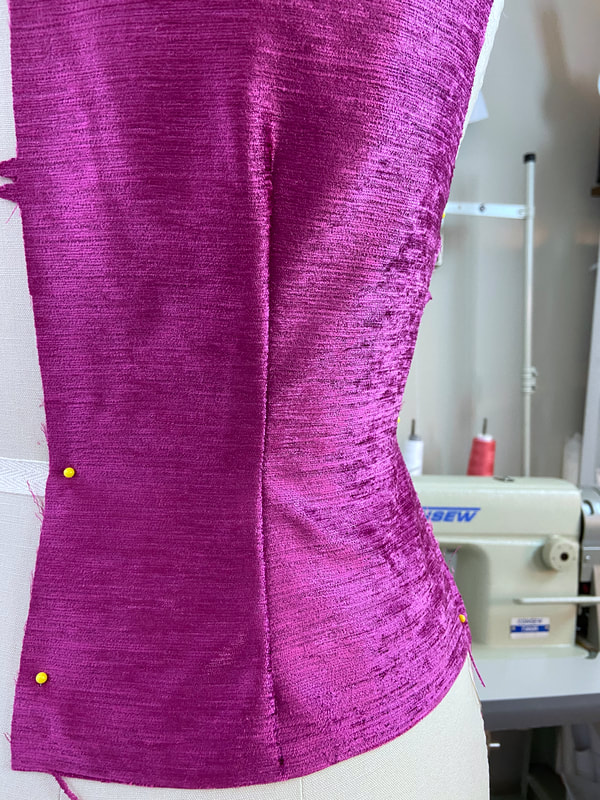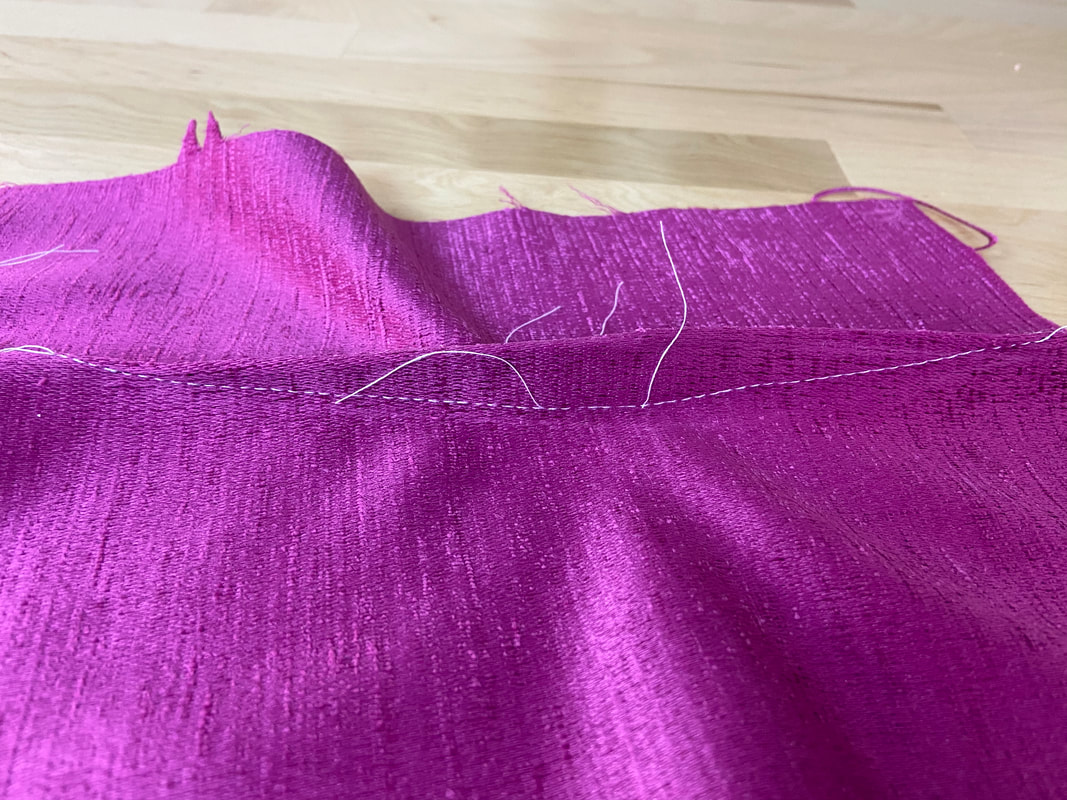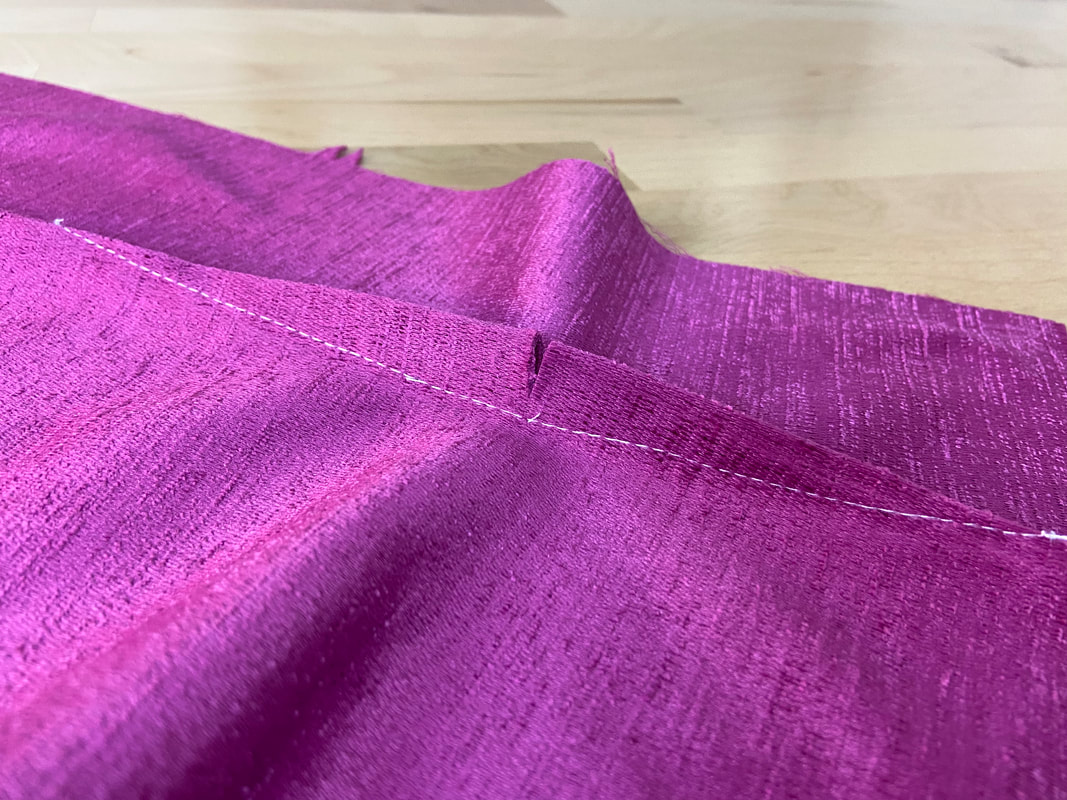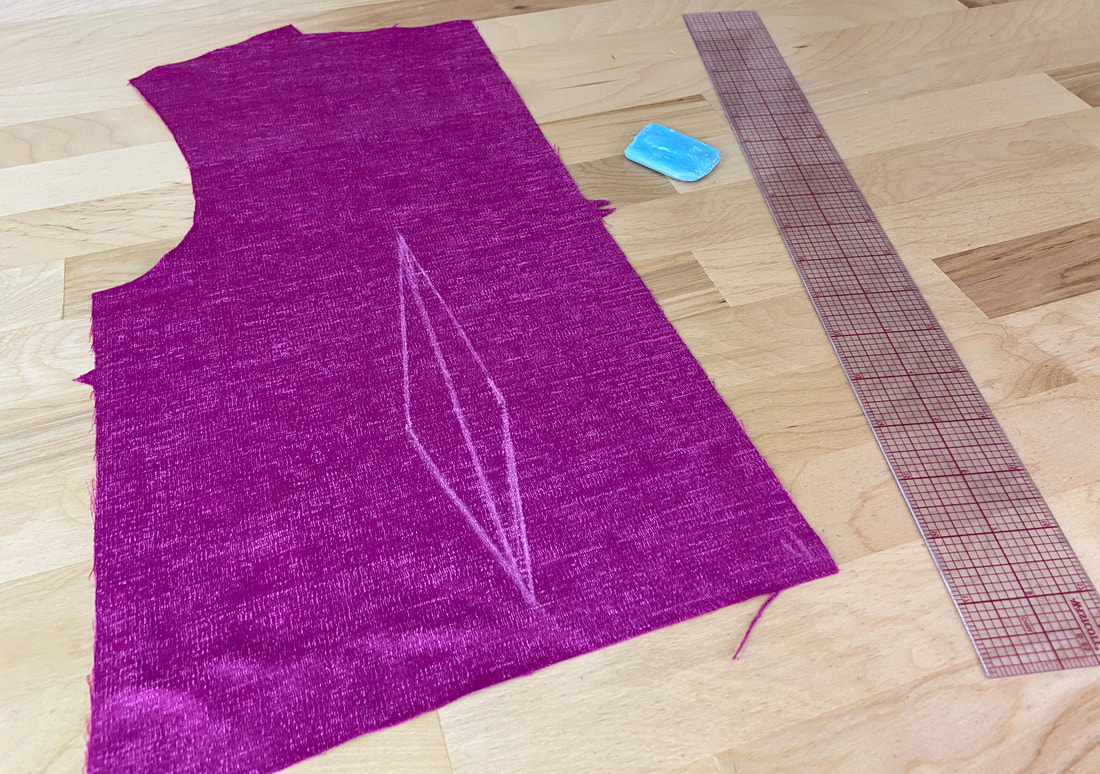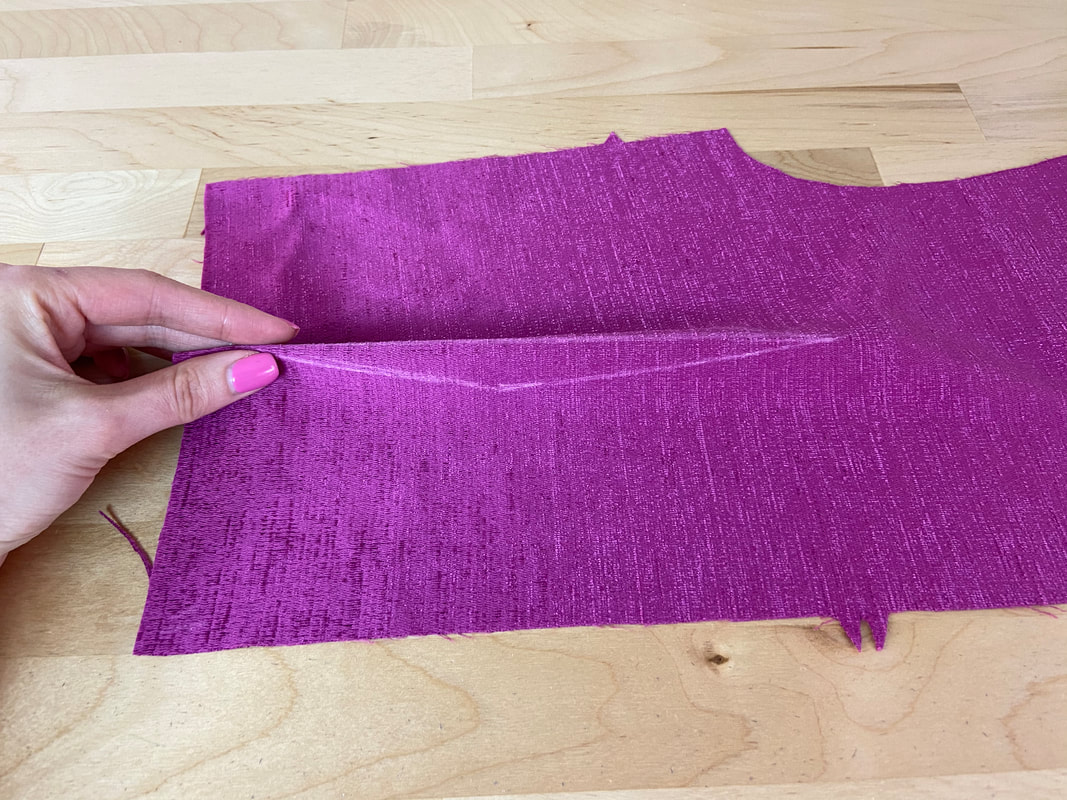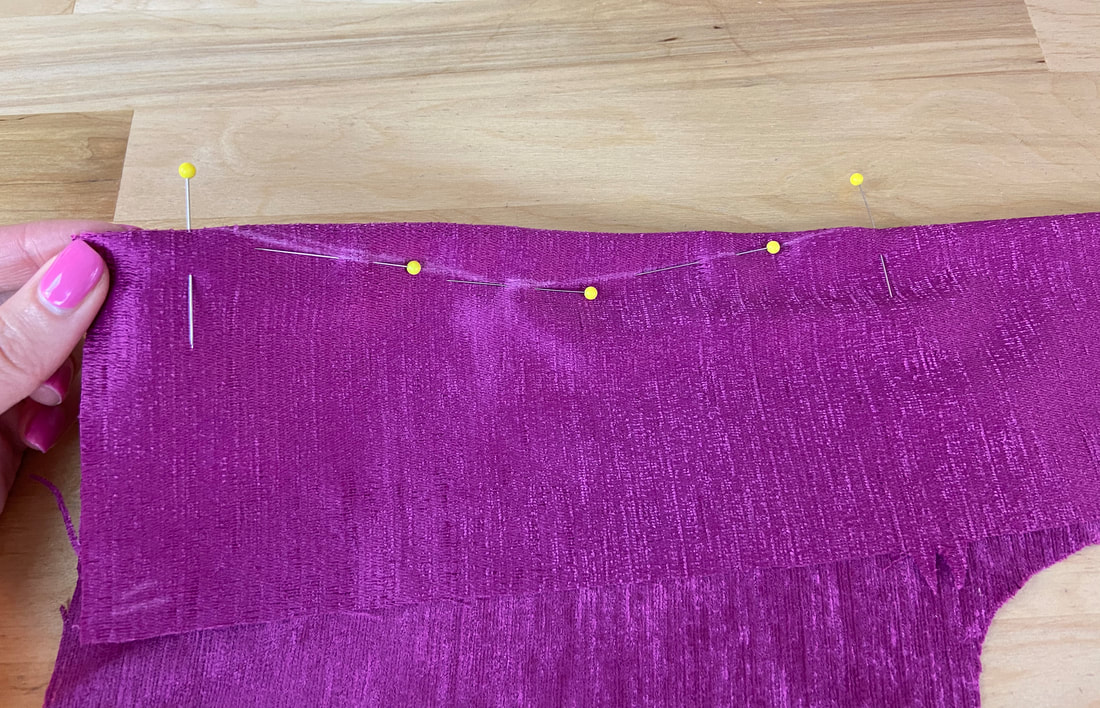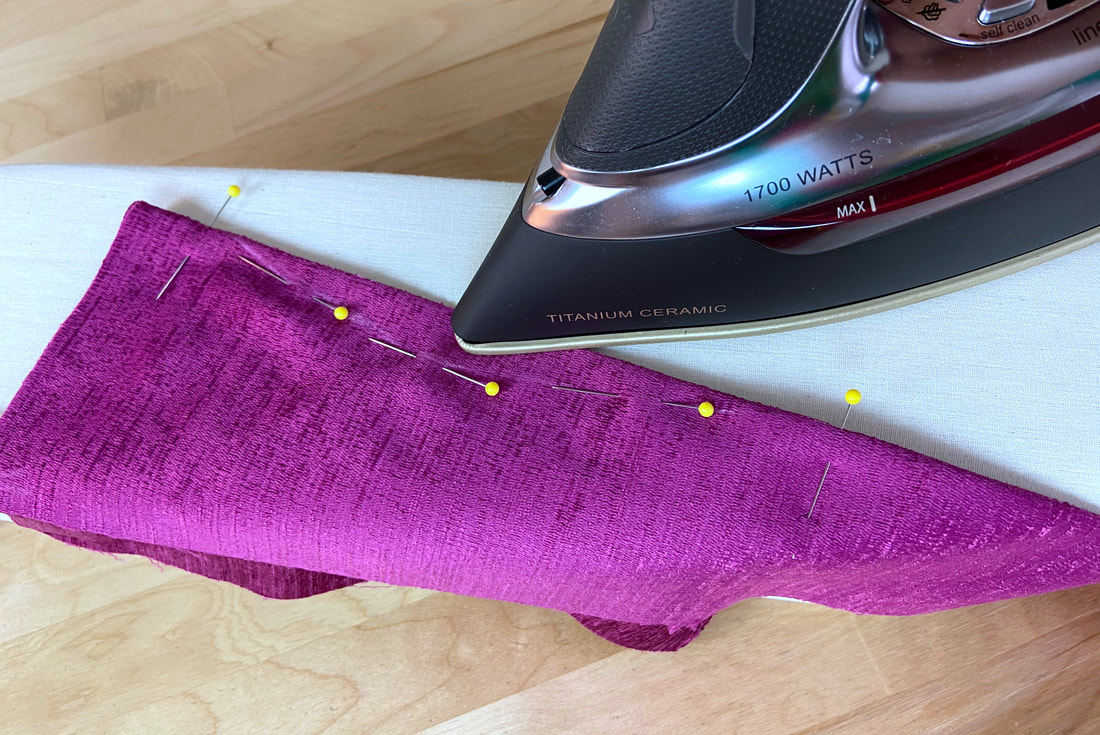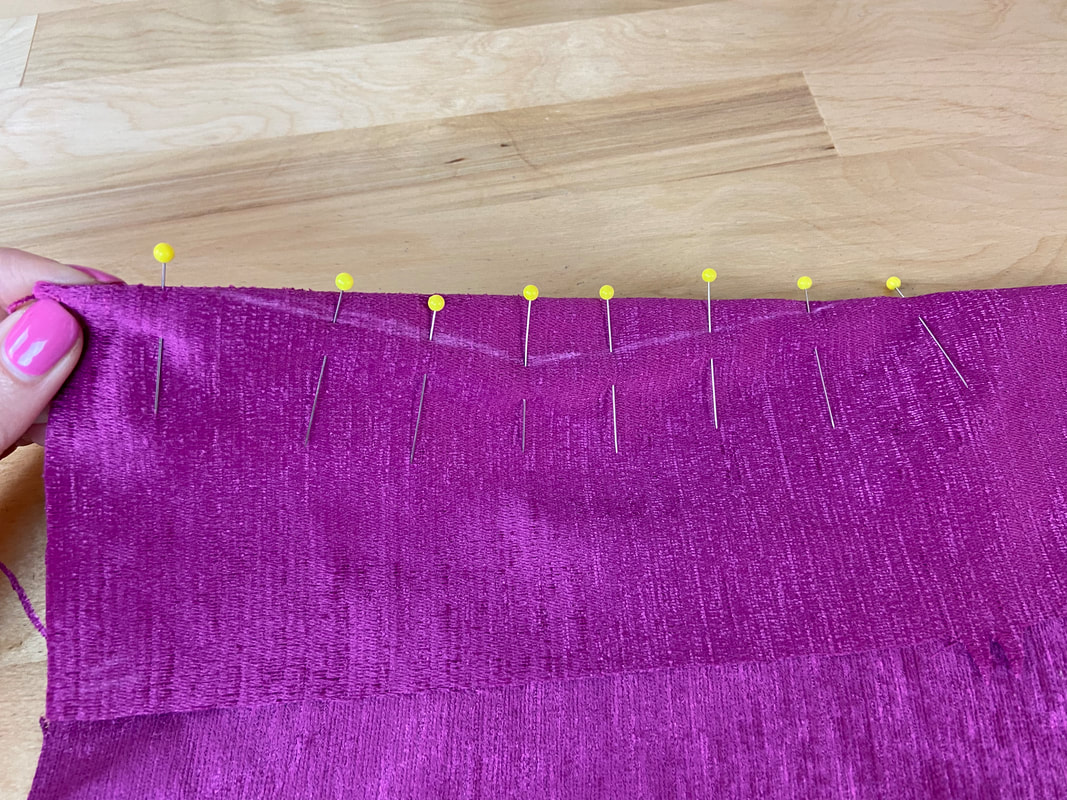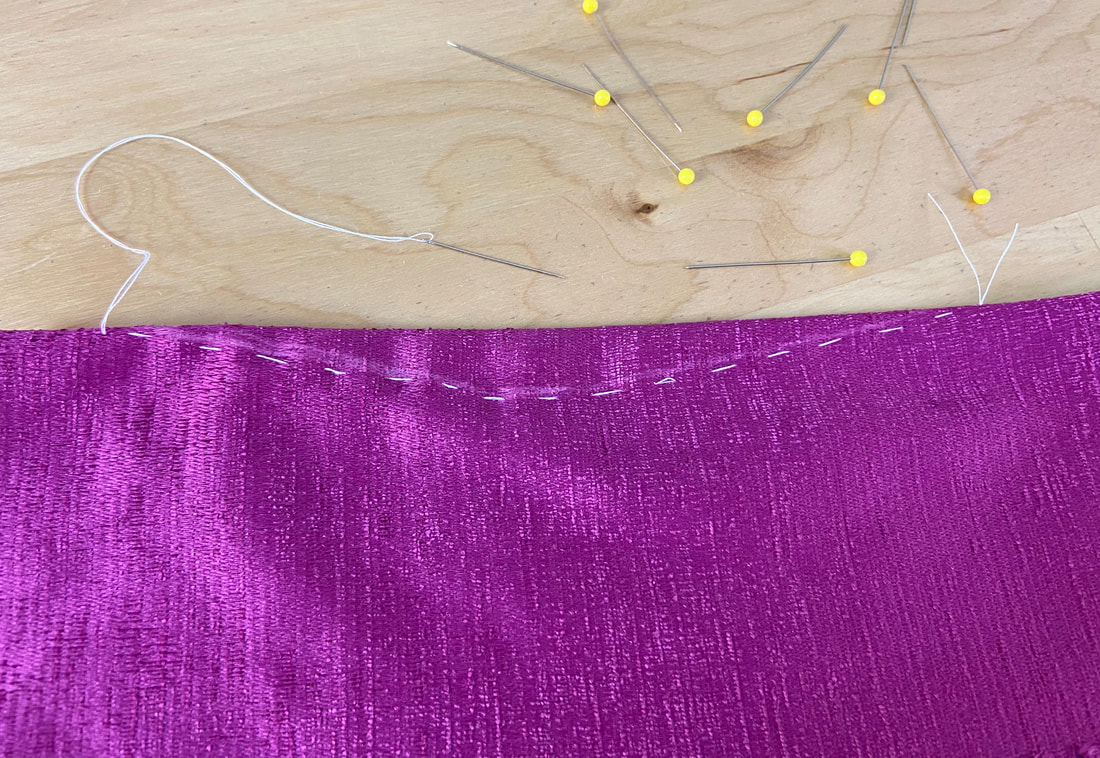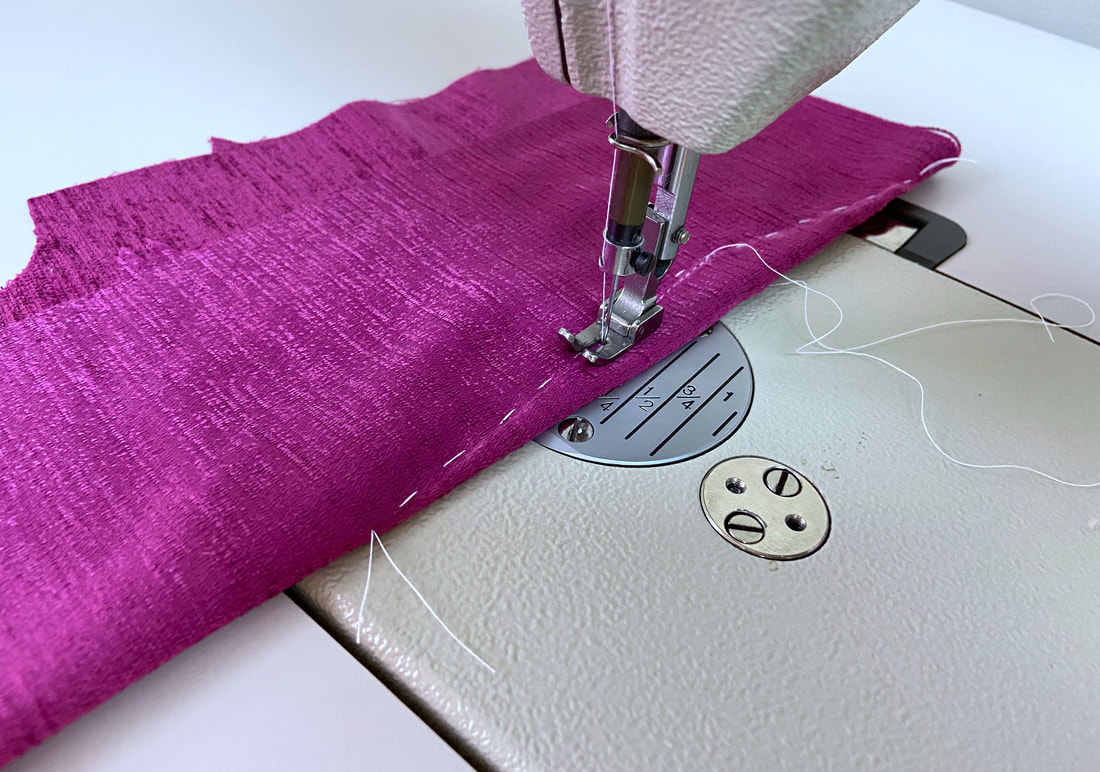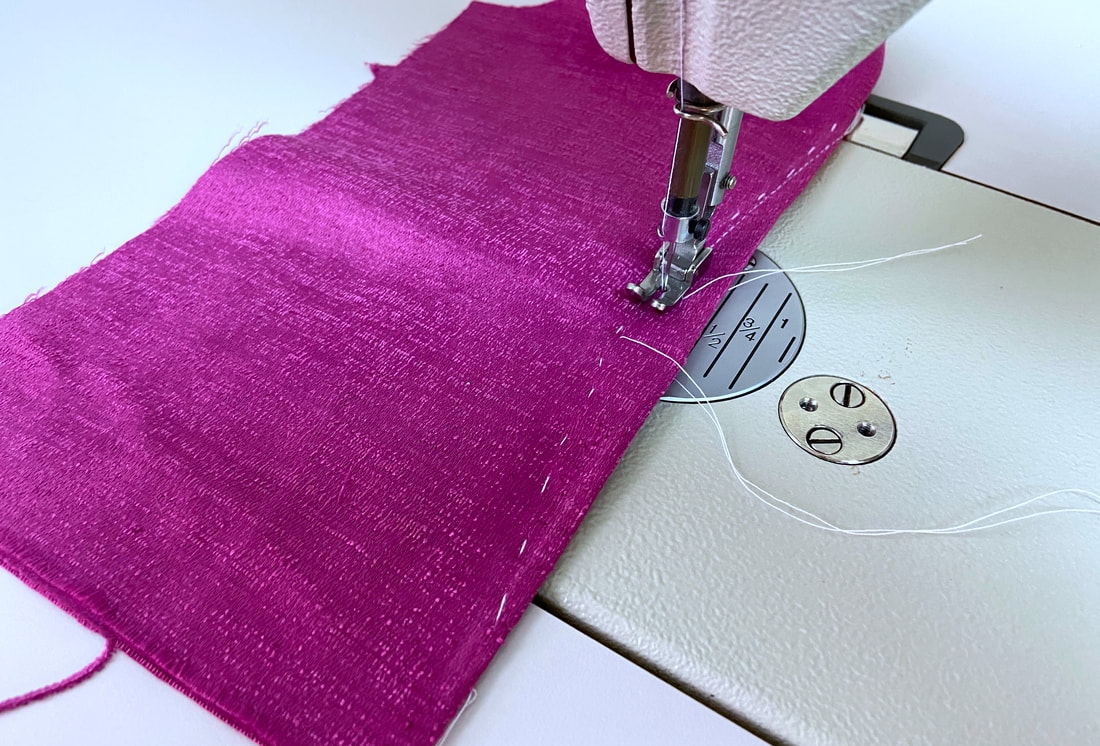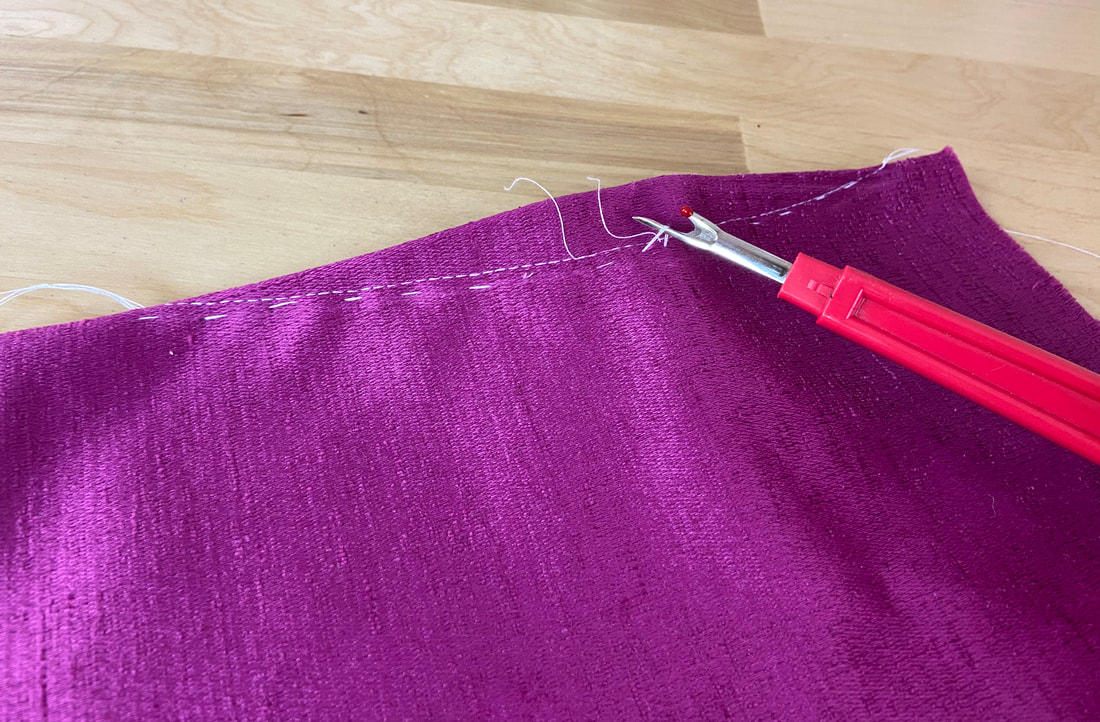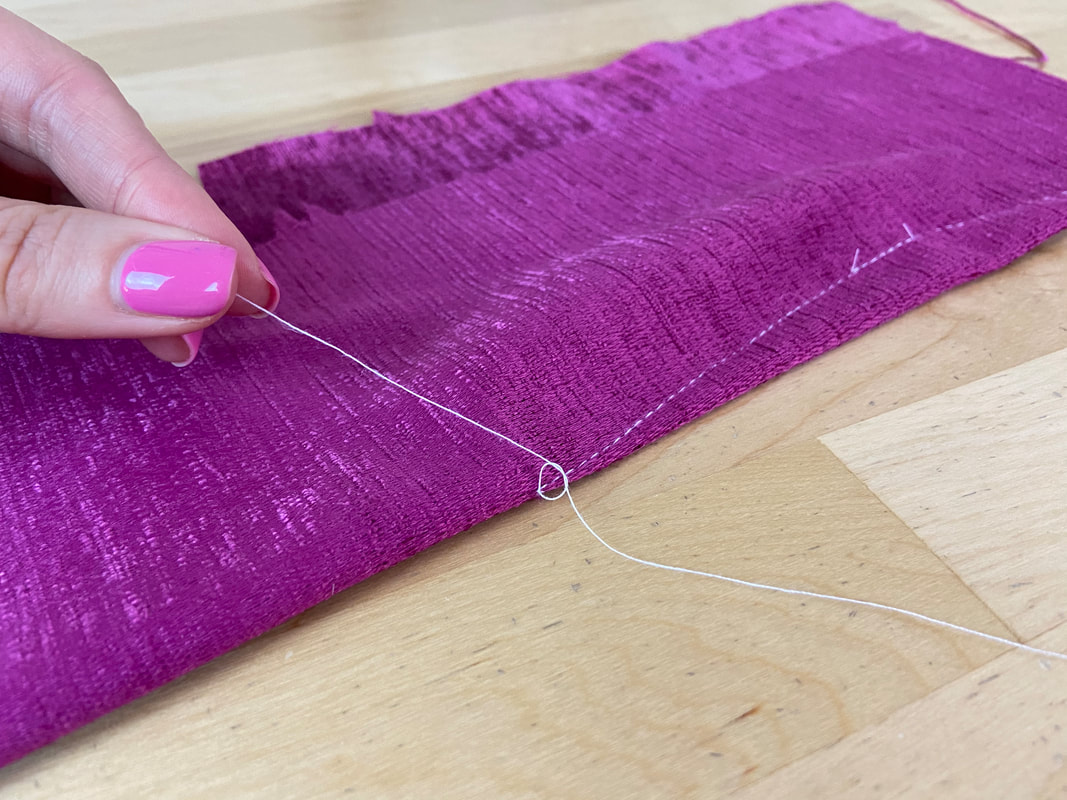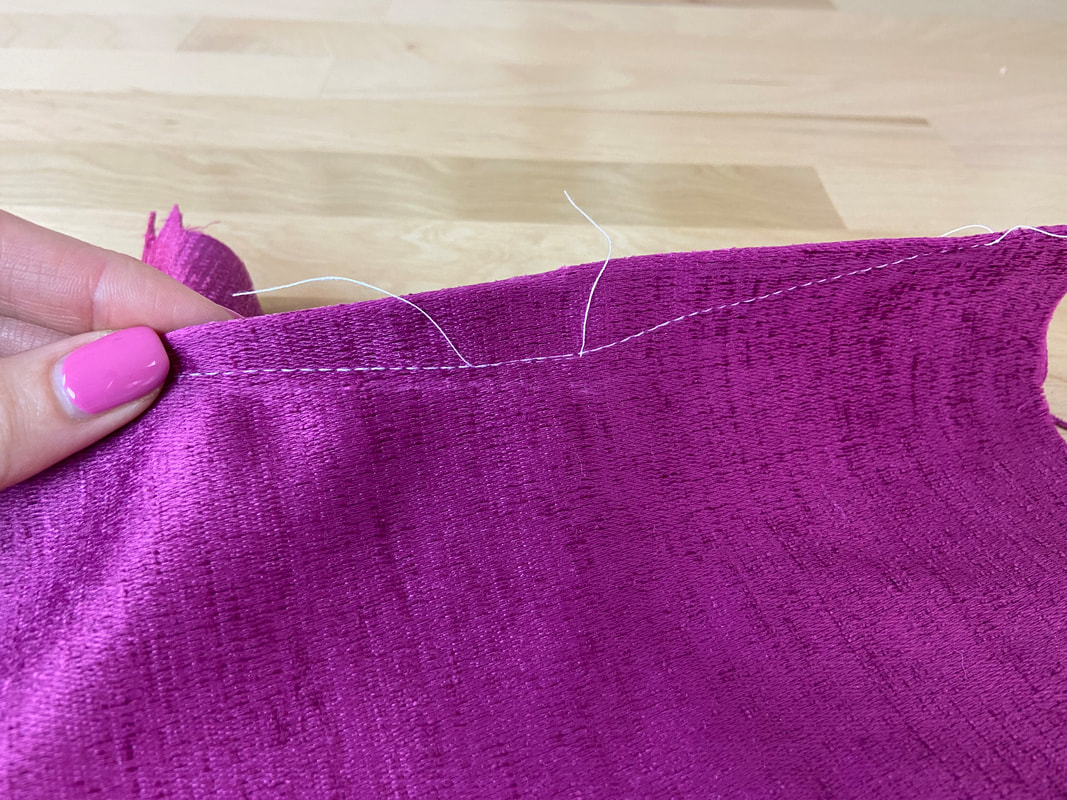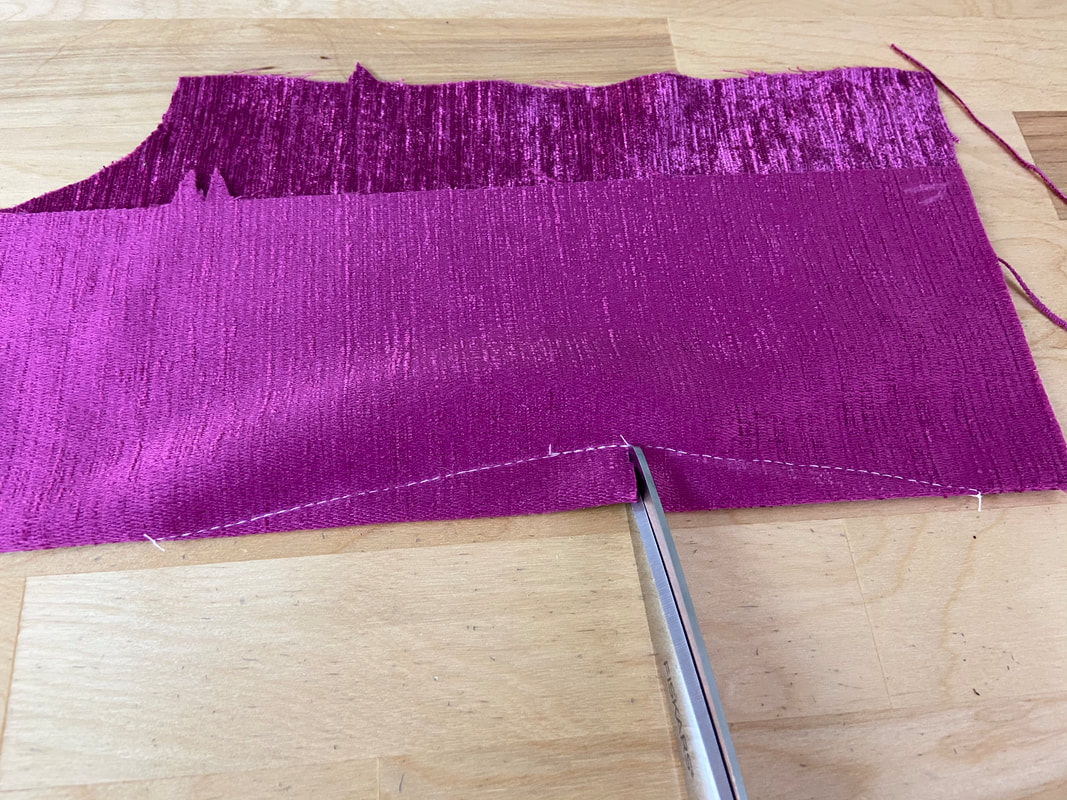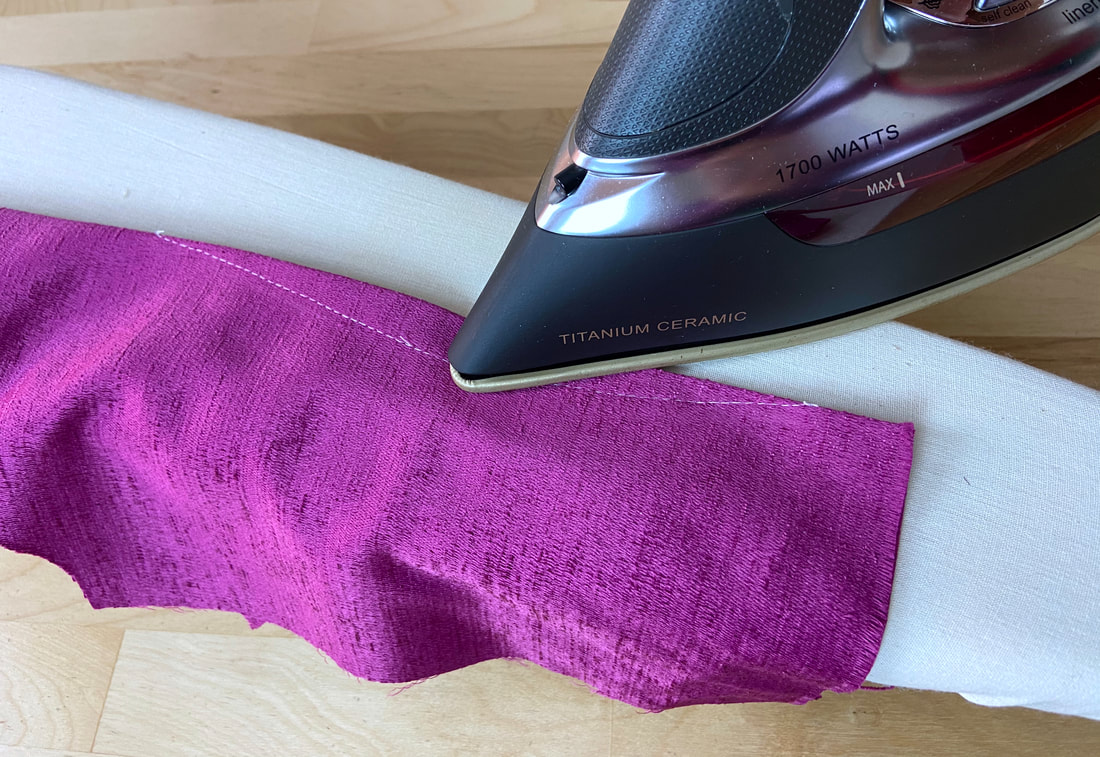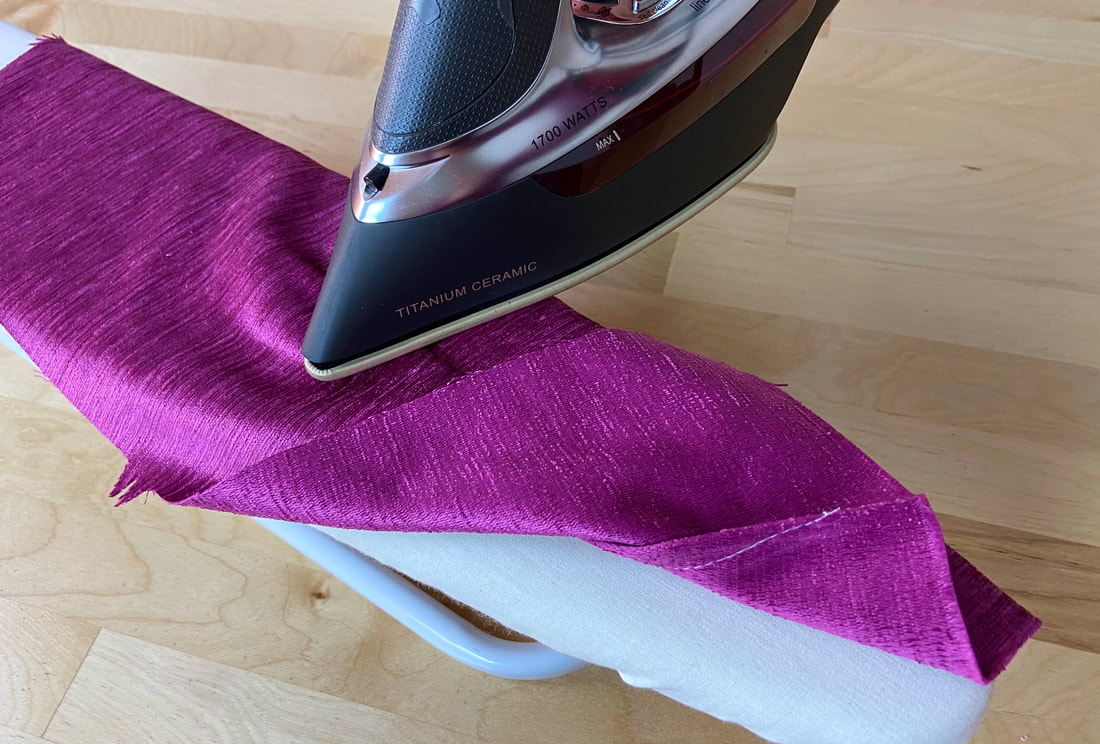Contour darts or double-pointed darts feature a wide intake in the middle and taper into two vanishing points at opposite directions.
The widest intake is located at the waist. From the waist, the dart tapers towards the top to a vanishing point located at the bust (front) or upper back (back) and to another vanishing point towards the bottom, located at the hip area (both front and back). Another way to think of its shape is as two single-pointed darts combined at their widest areas and pointing in opposite directions.
Contour darts are always located vertically on the body. They are most commonly used in dress construction to create form fitted styles from non-stretch, woven fabrics. Contour darts can also be used on tunic tops, blazers and coats to create a more contoured style at the waist area.
A contour dart is traditionally sewn in two steps: From the middle, widest area to the top vanishing point and again, from the same middle area towards the bottom vanishing point. Instead of backstitching, the stitch lines can be carefully overlapped at this middle point to lock them in place.
Contour darts are often trimmed horizontally at the widest intake to release tension and encourage the dart to lay flat. If the contour dart excess is very thin creating no tension on the face of the garment, it is safer to leave it unclipped.
Once sewn, contour dart excess is always ironed toward the center of the garment whether this is center front or center back.
Sewing A Contour (Double-Pointed) Dart
It is crucial that before beginning the sewing process, all dart lines and important sewing marks are transferred from pattern to fabric. This is especially important in the case of contour darts.
Use a transfer technique that will leave clearly marked lines on fabric. The tracing paper method or tailor’s chalk and pins method are two of the most universal options.
You can learn a variety of dart marking techniques in this tutorial: Marking And Transferring Darts To Fabric
1. Fold the contour dart down the center fold line such that the fabric wrong side is facing outwards and the fabric right sides are touching. Check to make sure both dart legs are now overlapping on both sides of the fold. The marked dart legs will serve as the dart stitch lines.
2. Match the dart stitch lines to each other, first at the center (widest part), then at each vanishing point. Complete the matching process by aligning the remainder of the dart lines.
Insert pins as you match the two lines at each point.
3. Iron the dart fold line for additional stability.
4. For added comfort during the stitching process, re-insert the pins perpendicular to the edge.
5. Once the folded dart is pinned in place, add a hand basting stitch next to the dart stitch line but not directly on top of it.
6. Starting at the middle (widest area), stitch towards one of the vanishing points directly on top of the marked dart line.
When arriving at the dart vanishing point, do not backstitch but tie the loose threads into a knot.
7. Going back to the widest area of the dart, stitch again directly on the marked dart leg towards the other vanishing point.
Use your seam ripper to remove all hand basting at this point.
Again, do not backstitch at the vanishing point but simply tie the loose threads by hand.
Instead of backstitching at the widest area of the dart, overlap the start of the second stitch to the beginning of the first. This will lock the stitching in place and prevent it from unraveling.
8. Clip the dart excess horizontally at its widest area, stopping at about ¼” away from the dart stitch line.
Clipping the dart excess allows the dart to lay flat, and eliminates pulling and tension issues at the waist. You may choose to skip this step if your contour dart intake is thin and does not create any tension issues within the garment.
Ironing The Finished Contour Dart
First, iron the contour dart stitching in the direction it was applied. In this case, from the center out towards each vanishing point.
Next, iron the excess towards the garment's center as shown. For front darts, the excess will point to the center front. Naturally, back dart excess will be ironed pointing toward the center back.
It is easier to iron darts form the face of the garment but be careful not to damage the fabric in the process. Always use a protective cloth for heat sensitive fabrics.

